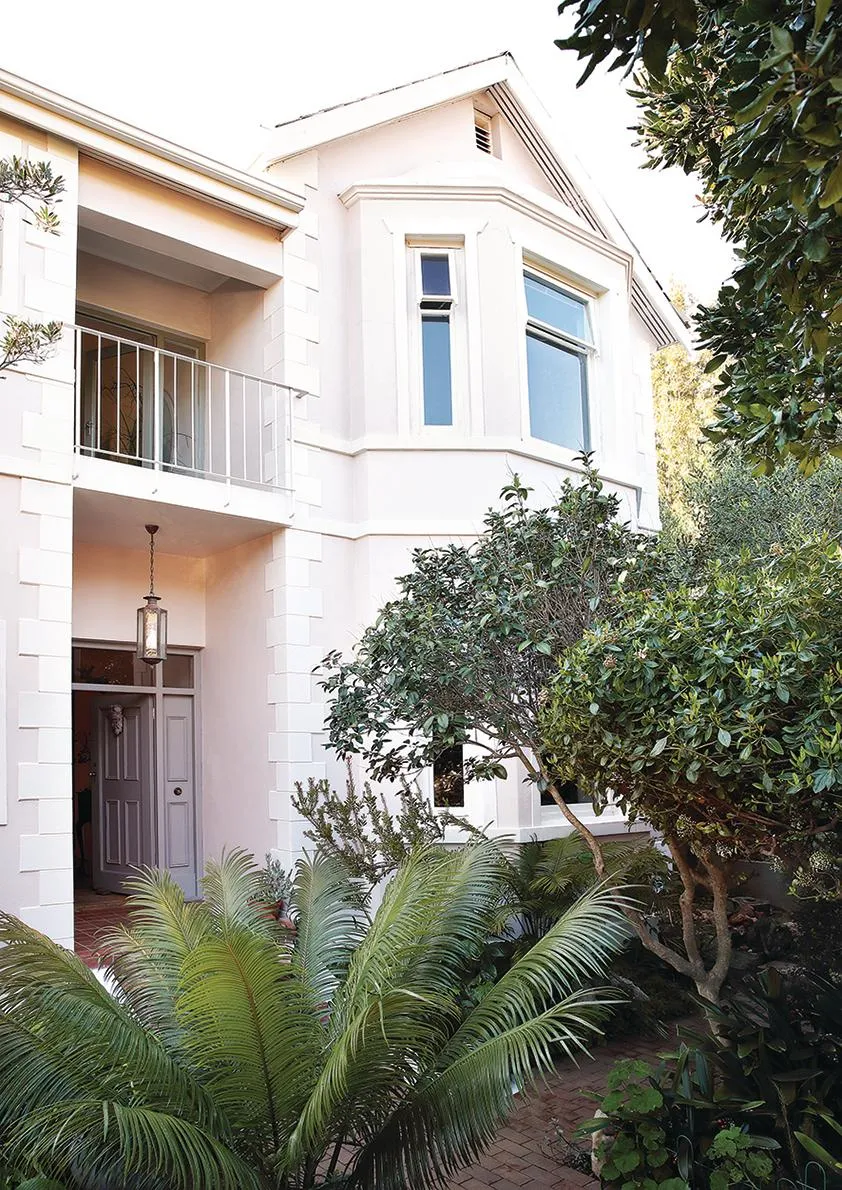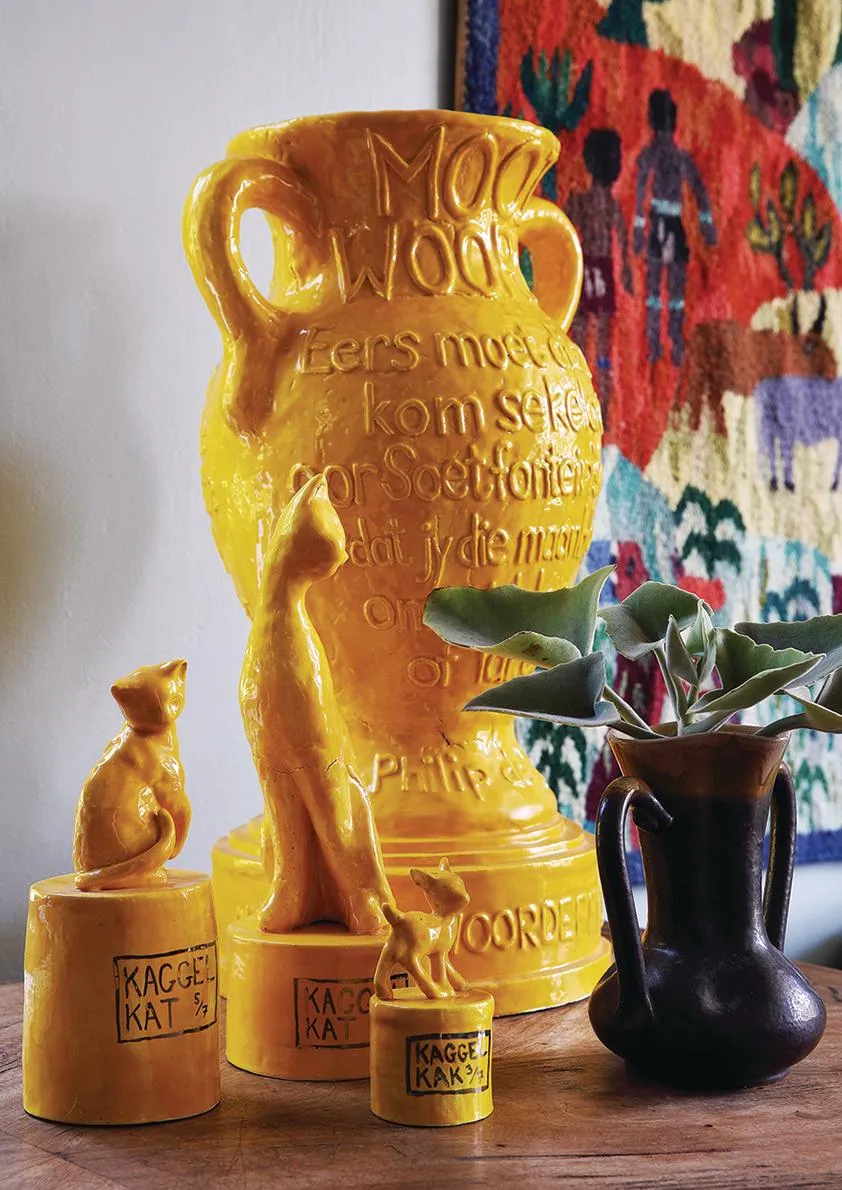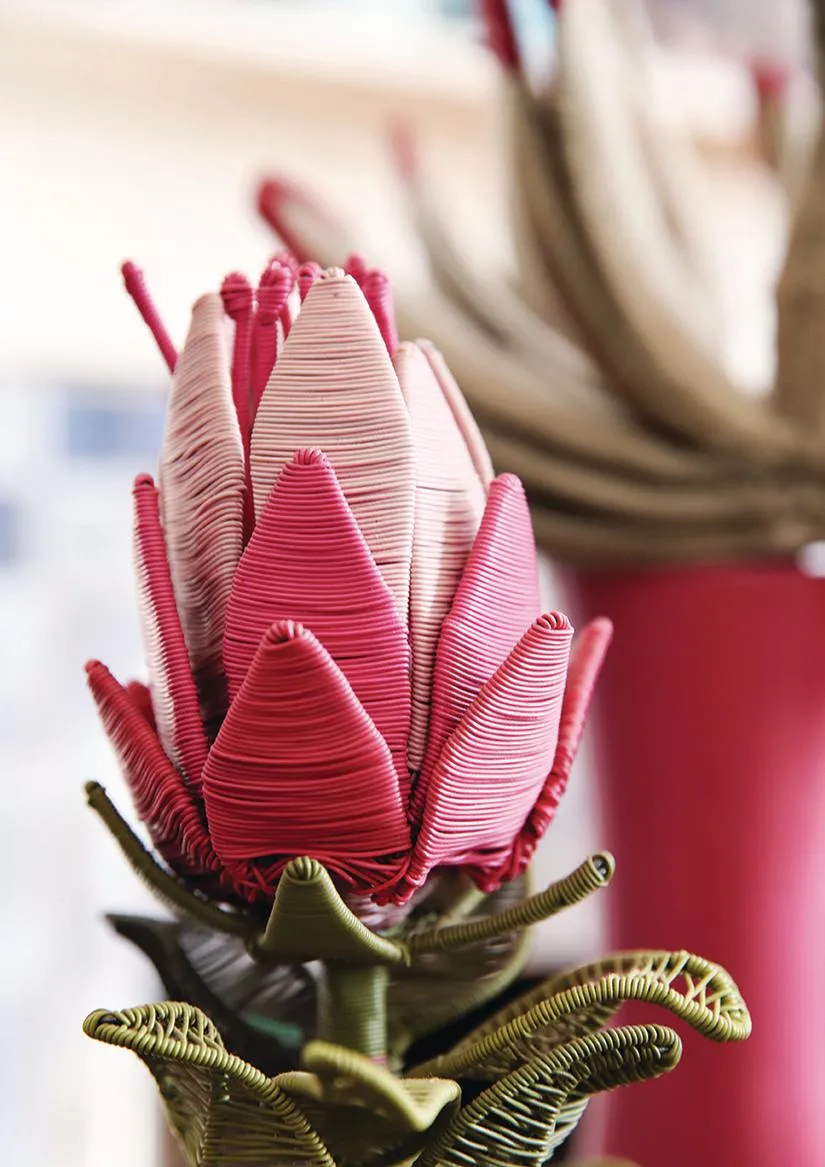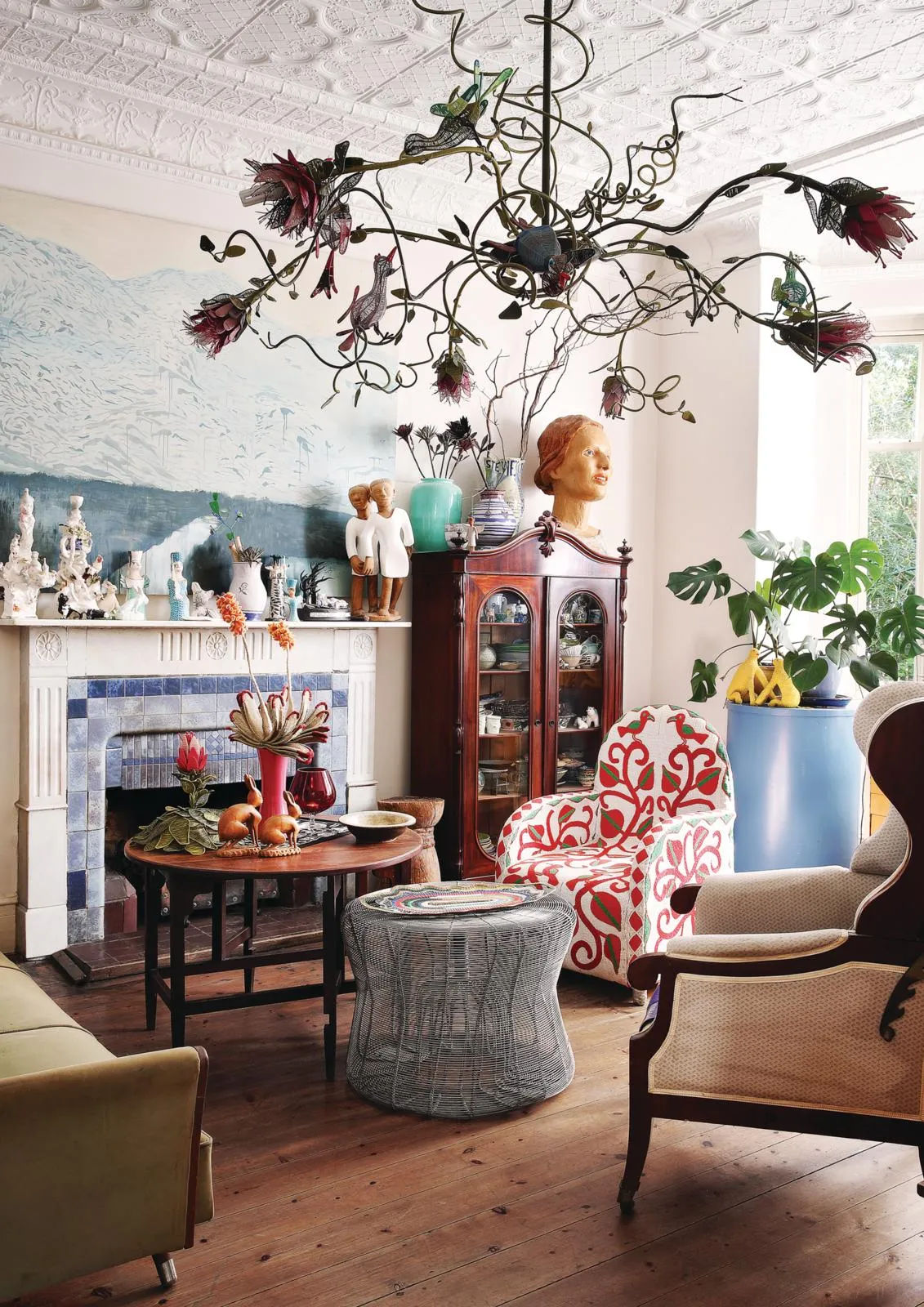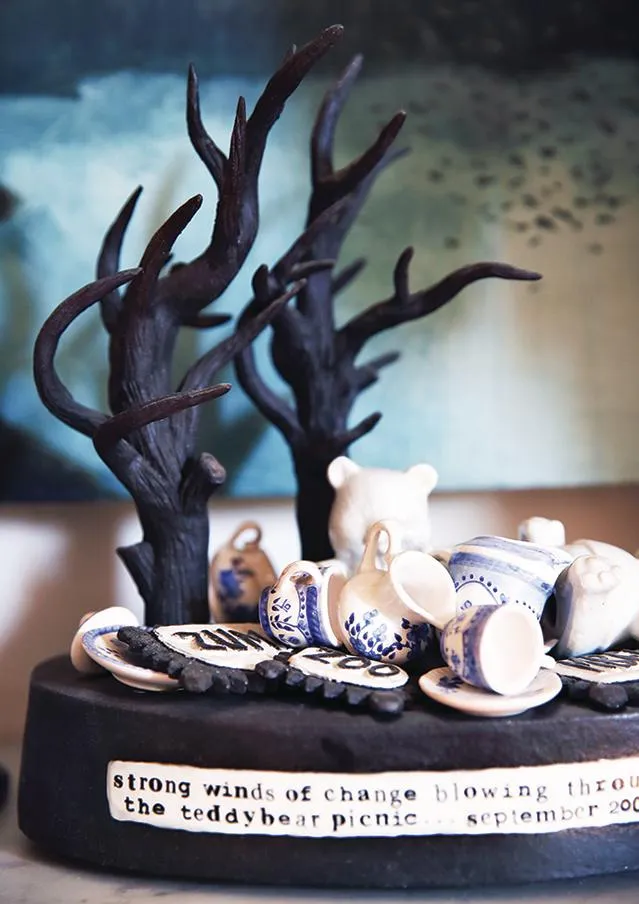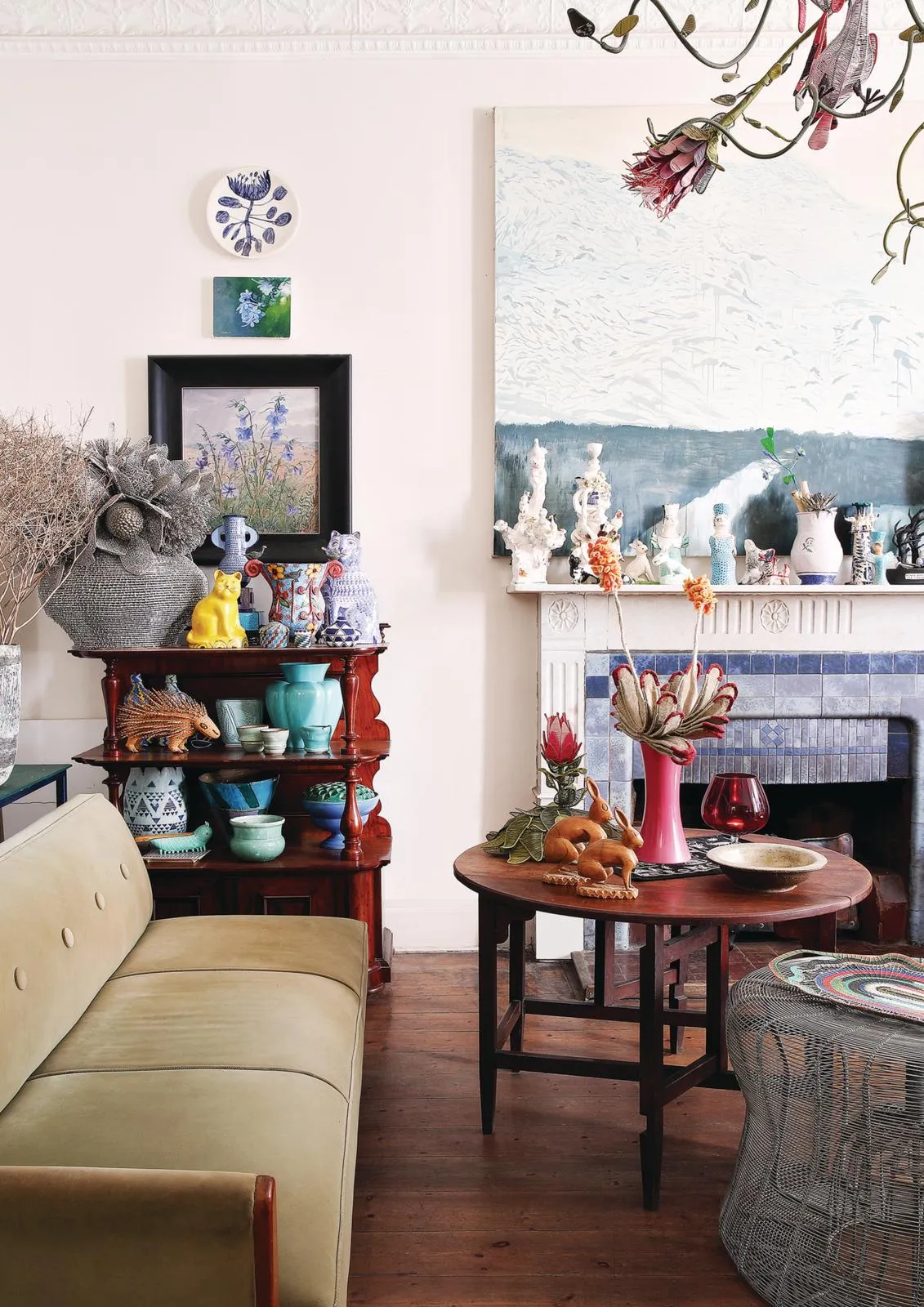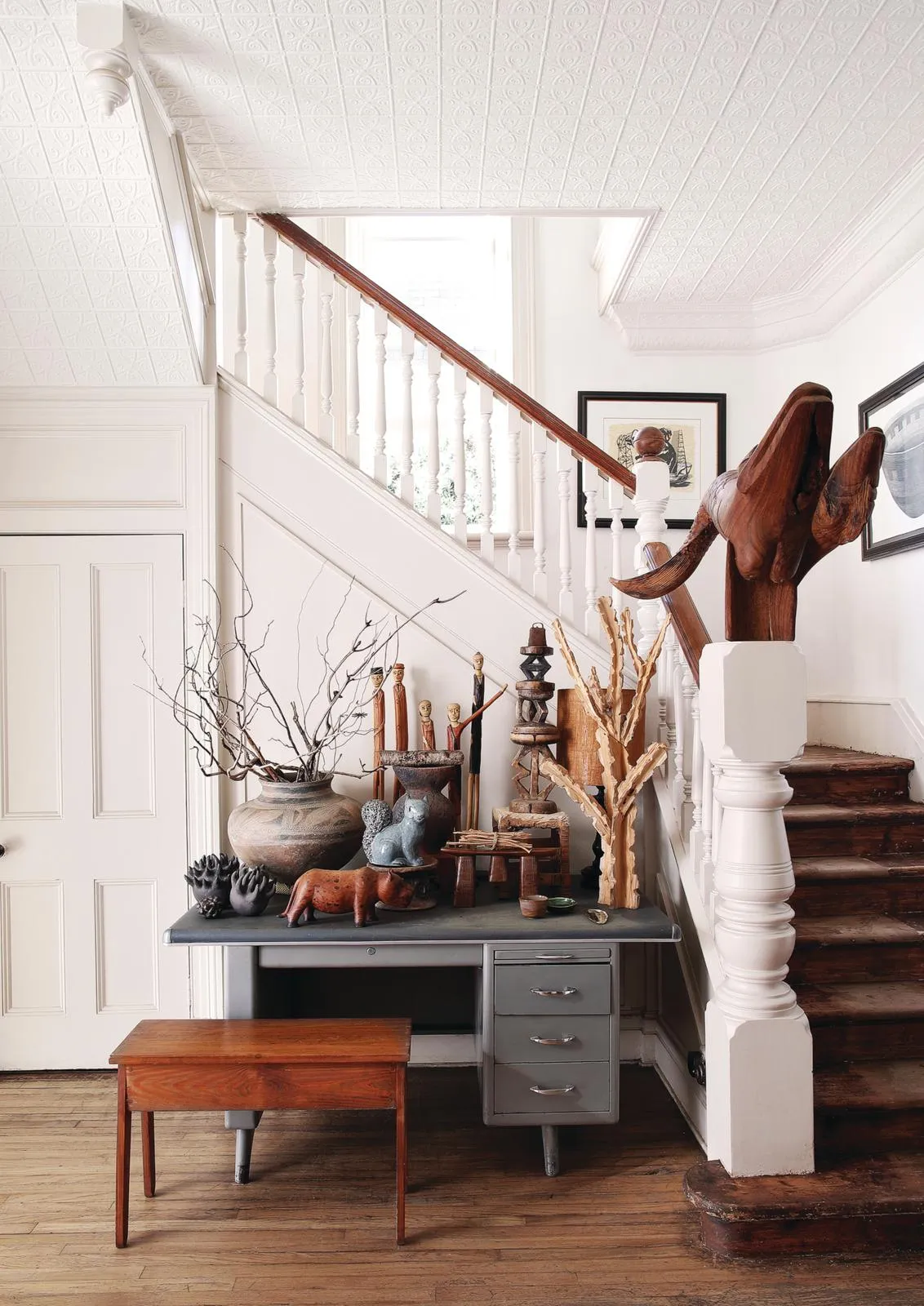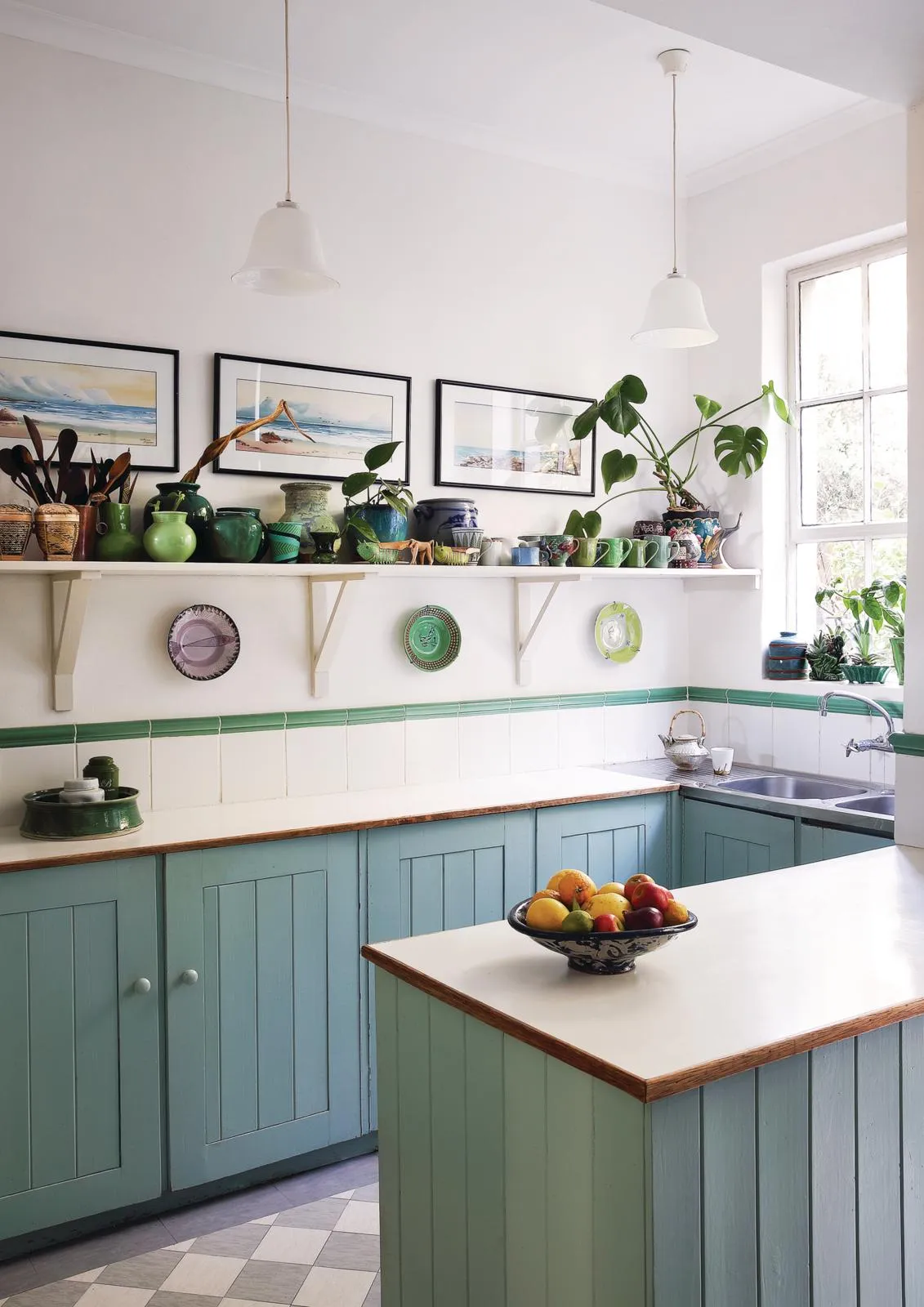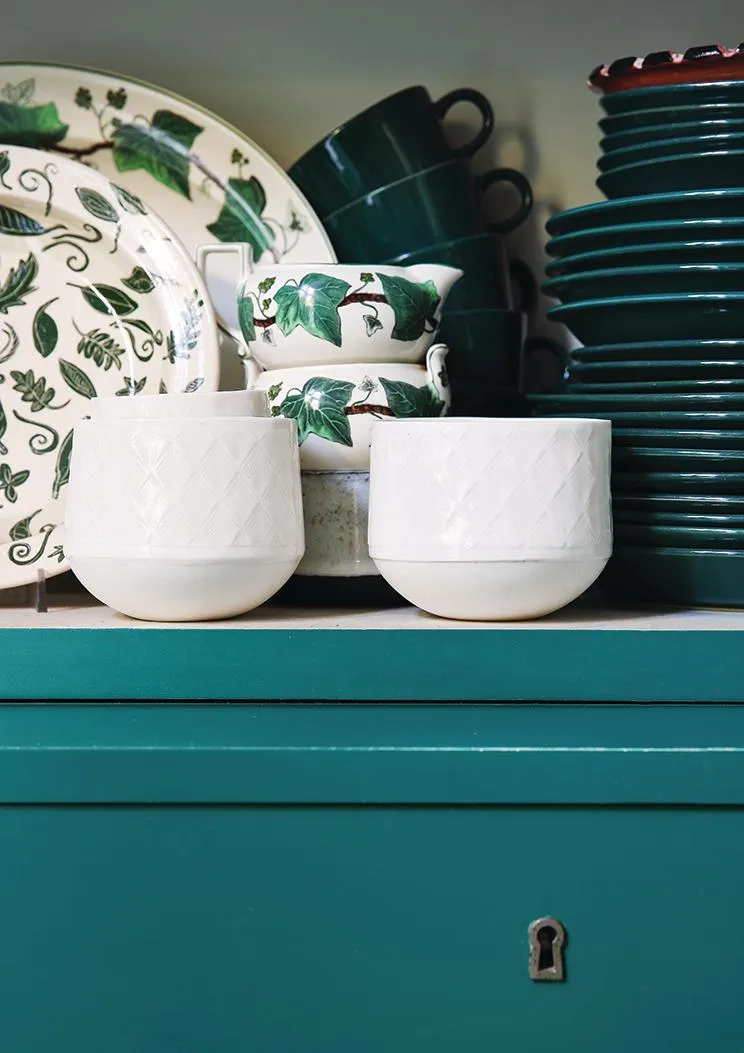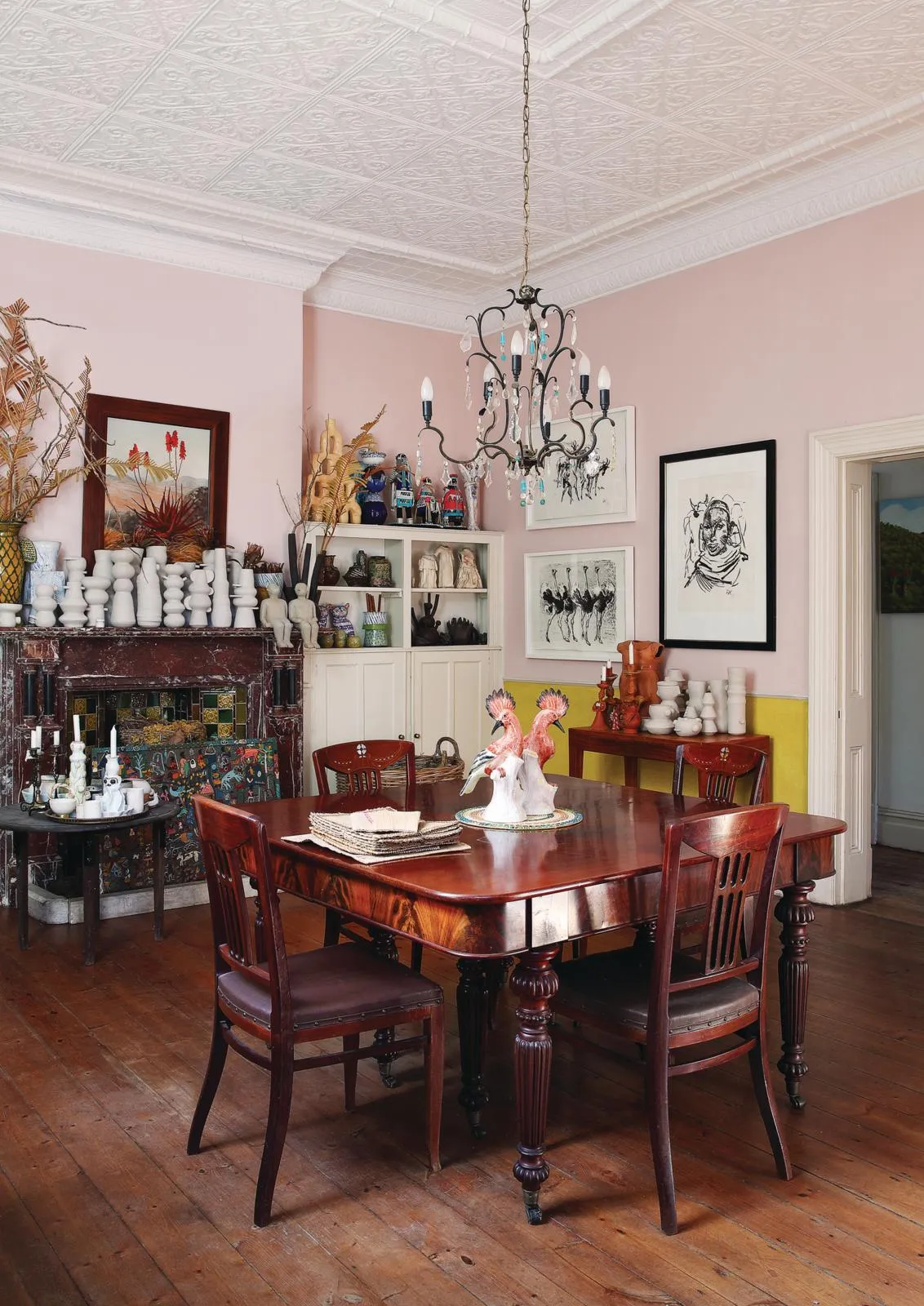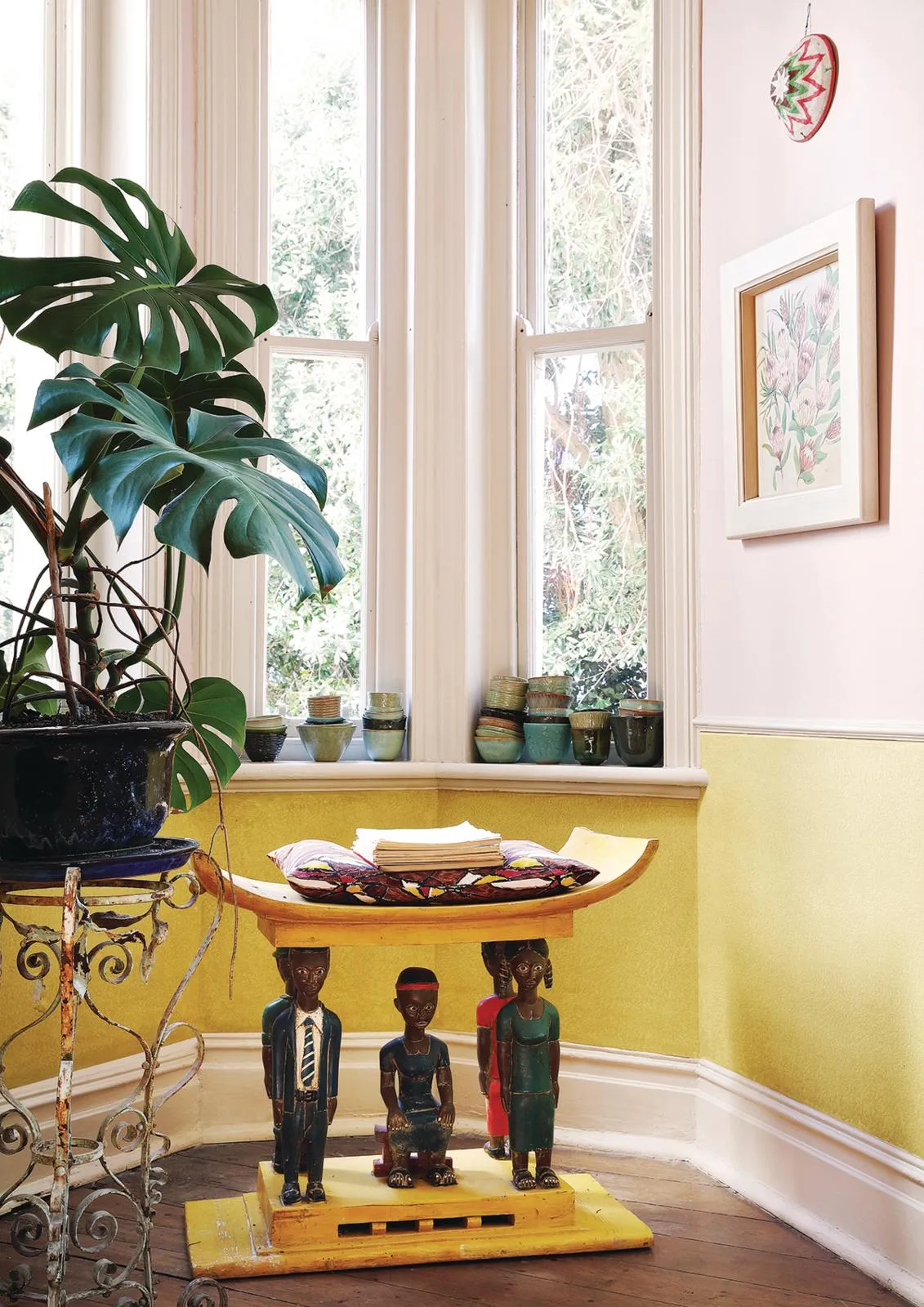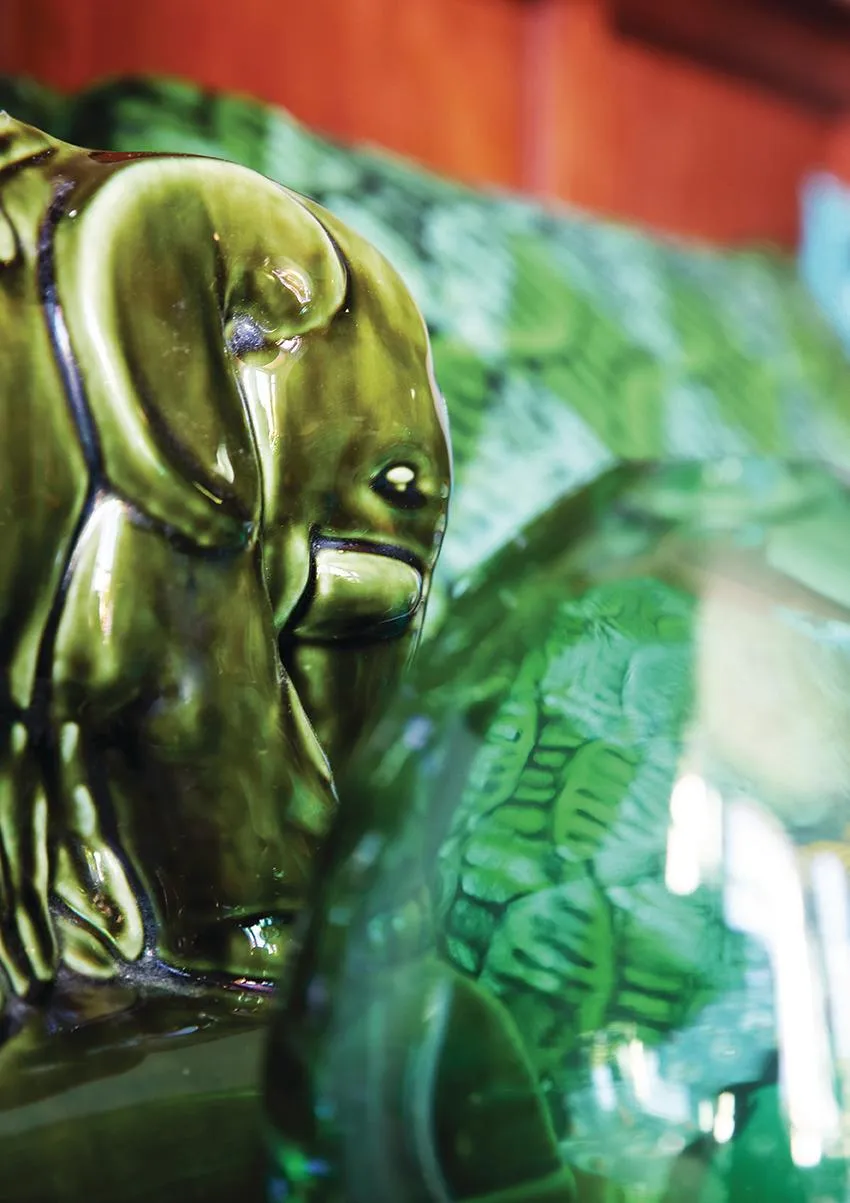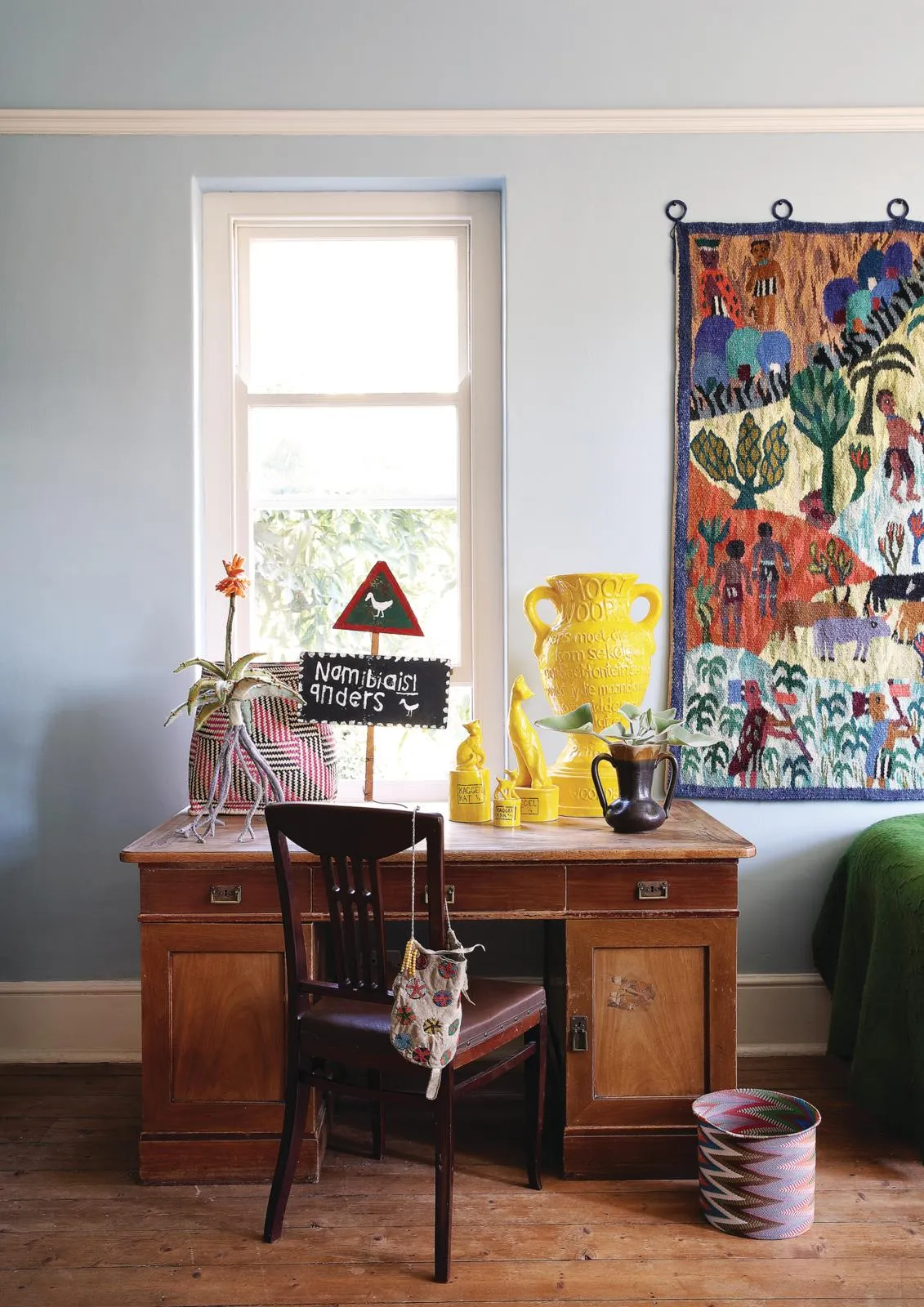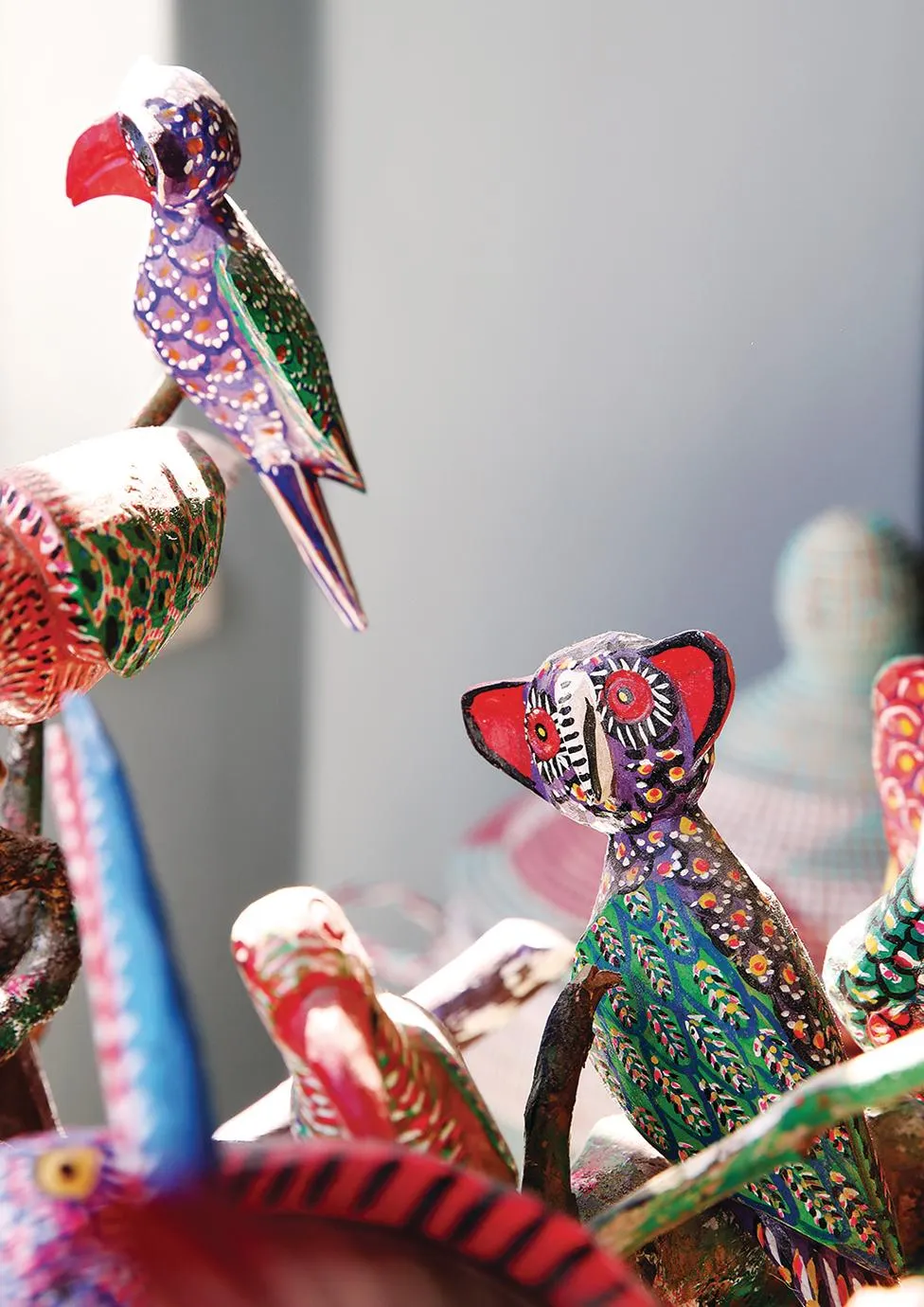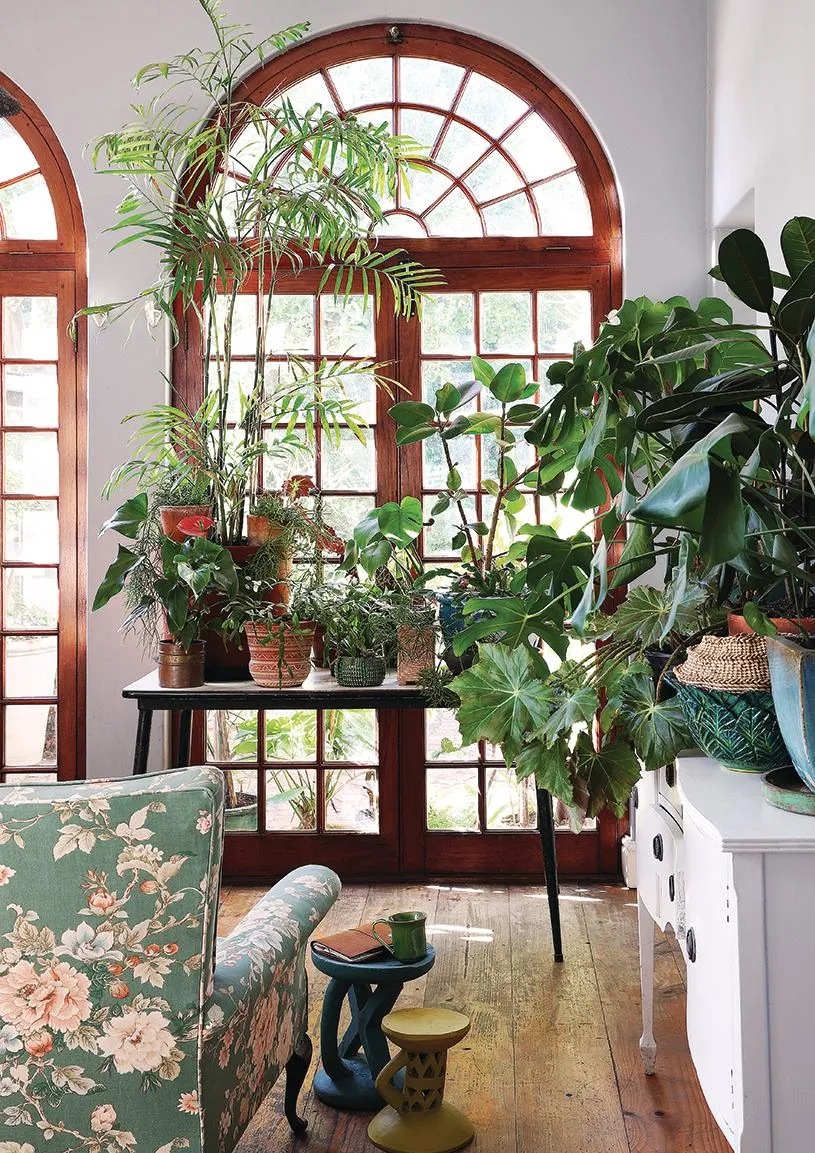As soon as she opens the front door of her graceful home in the Cape Town suburbs, Margaret Woermann is joined on either side by two large dogs – Lenghi and Lunah, her constant companions. The words ‘eccentric’ and ‘bohemian’ immediately spring to mind.
Margaret, who has lived in the house for over two decades, was born and raised in a rural farming community to a German immigrant family. Later, thanks to a strong artistic ability, a series of fortuitous twists and turns, a discerning eye and unrelenting determination, she went on to establish herself as one of the best-known names in the South African design world. She is now the owner of craft collective Heartworks, as well as being an acclaimed ceramicist.
The decor in her home, which dates from 1904, is influenced by her formative years on the farm: from several heavy pieces of inherited antique furniture and a collection of paintings by an artist uncle, to the dense garden that surrounds and shields the entire house.
Many elements here also hint at the austerity of her childhood: wooden floors left deliberately unadorned; walls she has painted herself; a thrifty assortment of furniture and paintings found at second-hand shops, auctions and given to her by friends; mix-and-match vintage crockery in utilitarian kitchen cupboards and textures that err on the side of humble and organic.
You might also like a farmhouse-inspired home filled with eclectic antiques
The characterful house features pressed tin ceilings, spacious rooms and restored sash windows that allow the light to pour in. These details are the perfect foil for Margaret’s collection of African art, craft and found ephemera that she has built up over a lifetime. It is also the backdrop to the pieces she has made herself. And while each room is quite different, they are all defined and therefore connected by Margaret’s talent for arrangement. ‘It feels a bit odd to me when people use the word ‘curated’ for how the house looks,’ says Margaret. ‘Really, I think it’s quite haphazard. It’s just evolved and become fuller the longer I’ve lived here,’ she explains.
She could be viewed as something of a cultural anthropologist, when you consider this impressive assembly of craft and her profound knowledge of each and every maker. Her collection’s roots extend to South Africa and neighbouring Namibia, Zimbabwe, Eswatini (Swaziland), Mozambique and Botswana to further afield in Central, West and East Africa.
However, she wouldn’t call herself an anthropologist, she says: ‘but I do feel connected to this art because it’s what I was exposed to as a child and later in my youth when I travelled in Africa. The rural art of the street and things made by hand with natural, recycled and utilitarian materials, which is so distinctive to craft, has always attracted me. Craft has such a life and vibrancy, it’s so unique and authentic to its maker. How can you not have a respect for and curiosity about that?’
Margaret’s position in the design industry gives her the opportunity to spot work by emerging talents, as well as supporting South Africa’s more established artists. The art that fills her home is dynamic and fresh, adding another layer to the eclectic tapestry of the interiors.
You might also like a traditional Swedish farmhouse
Textiles are another passion, and Margaret’s extensive collection clearly demonstrates her love of pattern and vibrant colour. And the way she has displayed these pieces is testament to her personal aesthetic and her endless creativity. Walls are hung with indigenous hand-embroidered tapestries and tribal blankets; in the bedrooms, graphic rugs soften the bare floorboards, while beds are covered with cushions and throws made from richly patterned traditional wax cloth.
And then there is her own art: captivating, large-scale pressed flower artworks; mixed-media installation pieces made from items such as clay, broken porcelain and flea-market bric-a-brac; and surface after surface filled with extraordinary pottery. There’s a series of bright yellow figurines and trophies, plus her latest fantastical vessels with curvaceous shapes and exquisite glazes in shades of sea blue and green.
Filled as it is with lovely things, her home is no museum or hallowed shrine. There is the constant patter of dog paws on the wooden floors, the buzz of nature from the garden, the ebb and flow of those with whom Margaret shares her space: various artists, guests and family members, including children whose delighted shouts ring out as they discover new hide-and-seek opportunities. ‘It’s a very big house,’ she says. ‘I don’t remember when last I was alone here. At the moment, I have two artists who work and live in the garden studios, my sister and a visitor from Europe who comes to Cape Town annually.’
You might also like take a look inside a New York townhouse
One of the most striking things about Margaret’s home is the sense of being in some sort of rural idyll with an atmosphere of calm more typically found in the countryside than on the urban fringes. From just about every window the view is of a wild garden – intensely green and lushly overgrown, with mossy pathways and seating areas that are nothing short of enchanting with their cooling shade, rustling leaves and continuous birdsong.
At the back of the house is a large vegetable garden cultivated and maintained by Margaret. Even the pool has been allowed to evolve into a pond, complete with aquatic plants, fish and chirping frogs. Immersed in this restful, enveloping space it is rather incredible to believe that one is, in actual fact, just a few minutes away from the noisy, bustling heart of the city and the cosmopolitan Atlantic Seaboard area.
Margaret is currently contemplating a more pared-back existence. She will soon be heading off to Japan to spend a month-long, in-residence pottery-making course in Seto, one of the country’s most historic kiln towns, famous for its porcelain production. ‘I don’t feel so attached to my things or to this house any more,’ she says. ‘I will always have pieces I cherish, but perhaps a simpler way of living is the way forward,’ she adds. ‘Without being too philosophical, maybe it’s like coming full circle, and I’m returning to the simplicity of life on the farm. Or perhaps I’ll fall in love with Japan and just move there. I’ve found that life can be mysterious that way.’
